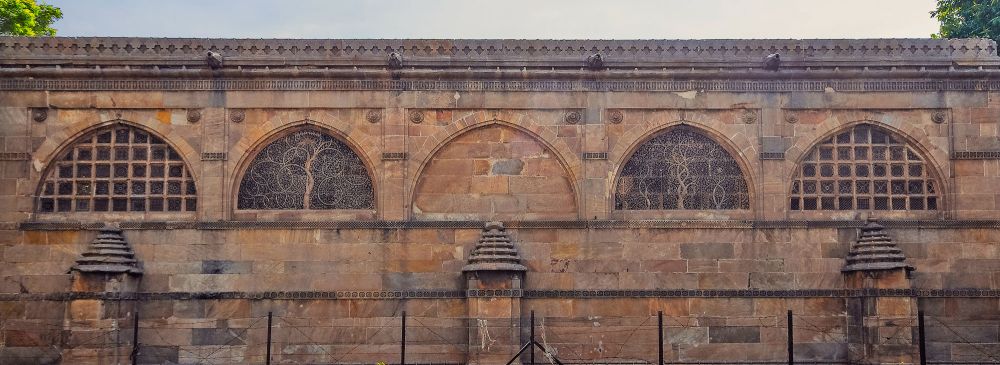

The Sidi Saiyyed Mosque, colloquially known as Sidi Saiyyed ni Jali, is an architectural marvel situated in the heart of Ahmedabad, Gujarat. It is famed for its intricately carved stone latticework and is an epitome of the Indo-Islamic fusion of architecture that flourished under the Gujarat Sultanate.
Completed in 1573, the mosque was constructed by Sidi Saiyyed, a slave of Sultan Ahmed Shah. The mosque is particularly renowned for its ten semi-circular windows (jalis) carved out of stone. The latticework depicts complex intertwined trees and foliage, with the highlight being the famed 'Tree of Life' jali, which has become a symbol of the city of Ahmedabad.
Built in the last year of the Gujarat Sultanate’s rule, the mosque is a heritage structure and has been a significant tourist attraction for a very long time. It represents the end of an era in Gujarat’s architectural history and embodies the sophistication and craftsmanship of a time gone by.
Historical tourism in Ahmedabad has always included the Sidi Saiyyed Mosque as a must-visit destination for those interested in architecture, history, and culture. Since its construction in the 16th century, the mosque has attracted visitors from all over the world. With the rise of Gujarat’s trade and commercial significance, the influx of tourists interested in heritage sites increased substantially.
Over the centuries, as awareness and the value of preservation of history have grown, so has the significance of the Sidi Saiyyed Mosque in the annals of tourism. It was during the late 19th and early 20th centuries, during British rule, that documented tourism began to take a more formal shape, with British officials and travelers coming to admire the architectural brilliance of the mosque.
In recent years, with a global increase in cultural tourism, there has been a renewed interest in the Sidi Saiyyed Mosque. The latest tourism trends show that visitors are increasingly seeking out authentic and immersive cultural experiences. Walking tours that explore the old city of Ahmedabad often include the mosque as a key attraction, enabling tourists to appreciate its artistry in the context of the historic environment.
Moreover, Ahmedabad's status as India's first UNESCO World Heritage City, awarded in 2017, has further heightened the mosque’s profile as a key heritage site. This prestigious recognition has spurred efforts to preserve the city’s cultural landmarks and has brought an influx of both domestic and international tourists.
With the advent of social media, the iconic 'Tree of Life' jali has become a prominent visual emblem for the city, drawing even more visitors to the site. Capturing this piece of artistry in photographs and sharing them online has become a popular activity for tourists, thereby integrating this historic site into the digital age.
The tourism history of the Sidi Saiyyed Mosque is rich and evolving. As the current trends in cultural and heritage tourism continue to grow, so does the importance of this historic site. It remains not just a symbol of Ahmedabad's past, but also a testament to the city's ongoing narrative as a center of beauty, history, and cultural depth.